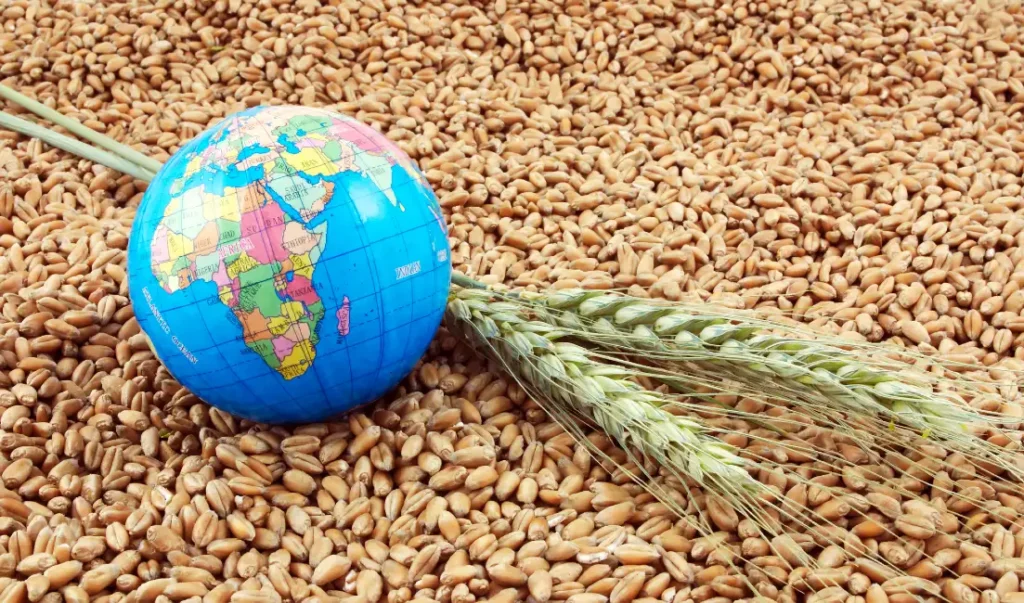Recent research highlights the critical threat of potassium deficiency in soils, jeopardizing global food production.
About the Potassium and its significance for plants:
- Potassium is a chemical element, with symbol K and atomic number 19.
- It is a silvery white metal that reacts rapidly with atmospheric oxygen to form flaky white potassium peroxide in only seconds of exposure.
- Potassium is a vital nutrient essential for plant growth, often overlooked as compared to nitrogen and phosphorus.
- Potassium is associated with the movement of water, nutrients and carbohydrates in plant tissue.
- It’s involved with enzyme activation within the plant, which affects protein, starch and Adenosine Triphosphate (ATP) production.
- The production of ATP can regulate the rate of photosynthesis.
- Potassium also helps regulate the opening and closing of the stomata, which regulates the exchange of water vapor, oxygen and carbon dioxide.
- If Potassium is deficient or not supplied in adequate amounts, it stunts plant growth and reduces yield.
- Approximately 20% of agricultural soils globally suffer from potassium deficiency, notably in regions like East Asia, Southeast Asia, Latin America, and sub-Saharan Africa.
About the Potassium Crisis:
Challenges and Consequences:
- Current agricultural practices lead to soil-nutrient mining, where more potassium is extracted during harvests than replenished through fertilizers.
- Potassium deficiency hampers crop yields, evident in countries like India where it has led to decreased agricultural productivity.
- Potassium reserves are concentrated in a few countries, primarily Canada, Belarus, and Russia, posing risks of supply disruptions for importing nations.
- Volatile potash prices, influenced by geopolitical factors and economic fluctuations, may impact global food prices and agricultural stability.
Environmental Impacts:
- Potash mining generates significant environmental consequences, including the accumulation of mine waste, particularly salt, which can harm ecosystems if not managed properly.
- Uncertainty persists regarding the environmental effects of increasing potassium concentrations from fertilizers, necessitating further research.
Solutions:
- Assessment of Potassium Stocks: Conduct a global assessment of potassium soil stocks to identify at-risk regions.
- Price Fluctuation Monitoring: Develop better capabilities for predicting and monitoring potassium price fluctuations to mitigate food price spikes.
- Farmers’ Support: Define optimal potassium levels for local areas and provide targeted fertilizer recommendations to farmers.
- Environmental Evaluation: Synthesize evidence on environmental impacts of potash mining and potassium fertilizers, exploring alternatives like polyhalite.
- Circular Potassium Economy: Promote recycling and reuse of potassium, reducing reliance on mined sources and promoting diets with lower potassium footprints.
- Inter-Governmental Cooperation: Establish an intergovernmental mechanism to consolidate knowledge, set global targets, and quantify economic benefits, akin to efforts for phosphorus and nitrogen management.
Ref: Source
| UPSC IAS Preparation Resources | |
| Current Affairs Analysis | Topperspedia |
| GS Shots | Simply Explained |
| Daily Flash Cards | Daily Quiz |




